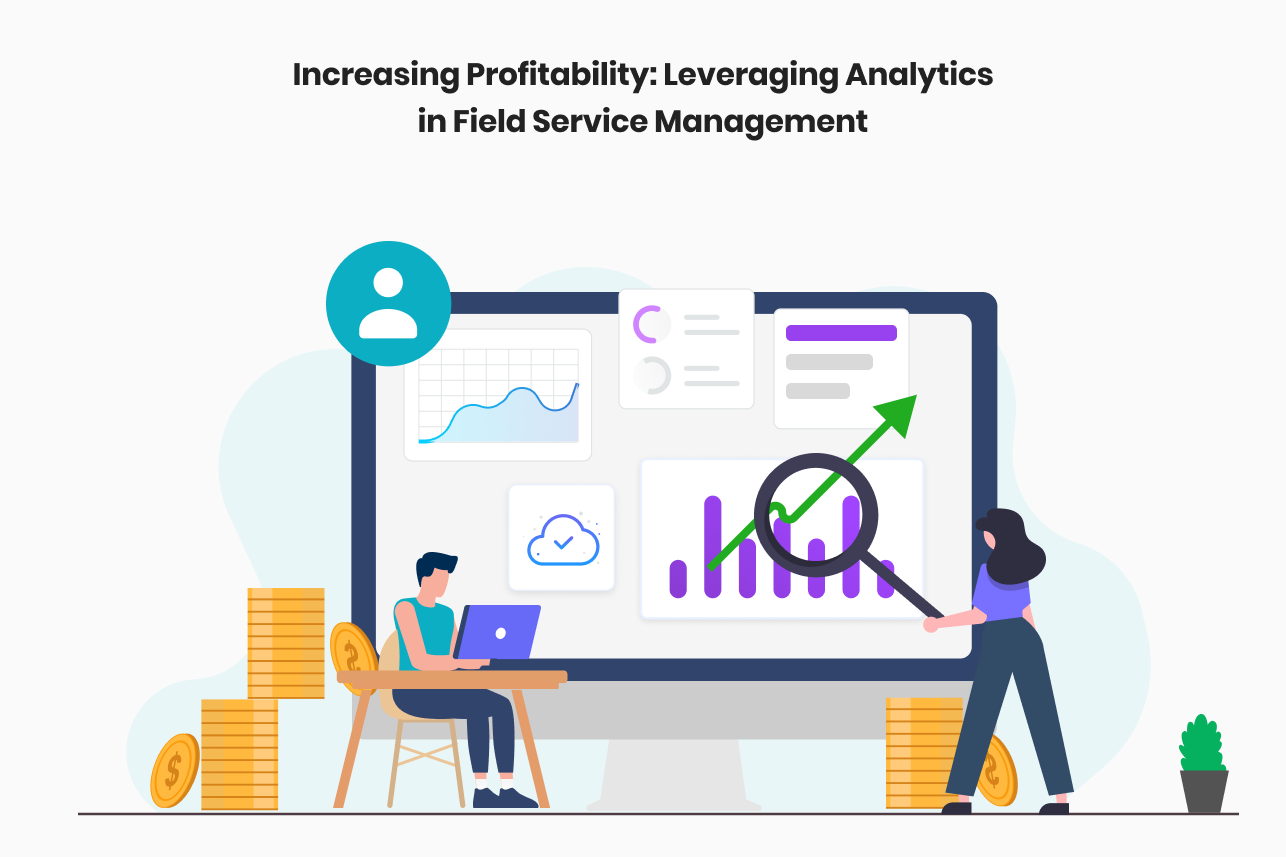In the competitive landscape of field service management, profitability hinges on efficiency, productivity, and customer satisfaction. With the advent of advanced analytics, businesses now have a powerful tool at their disposal to optimize operations and drive profitability. In this article, we’ll explore how leveraging analytics in field service management can lead to increased profitability and business success.
Understanding the Role of Analytics in Field Service Management
Analytics plays a pivotal role in field service management by providing actionable insights into various aspects of operations. From tracking key performance indicators (KPIs) to identifying trends and patterns, analytics enables businesses to make data-driven decisions that drive efficiency and improve outcomes. By harnessing the power of data, businesses can optimize resource allocation, streamline processes, and enhance customer experiences.
Key Benefits of Analytics in Field Service Management
- Optimized Resource Allocation: Analytics helps businesses analyze historical data and forecast future demand, enabling them to allocate resources such as manpower, equipment, and inventory more efficiently. By identifying peak times, high-demand areas, and resource utilization trends, businesses can optimize scheduling, reduce idle time, and minimize costs.
- Predictive Maintenance: Analytics enables businesses to implement predictive maintenance strategies by analyzing equipment performance data and identifying potential issues before they occur. By proactively addressing maintenance needs, businesses can minimize downtime, extend equipment lifespan, and reduce costly repairs, ultimately leading to increased productivity and profitability.
- Improved Service Quality: Analytics provides insights into service performance metrics such as response times, resolution rates, and customer satisfaction scores. By analyzing these metrics, businesses can identify areas for improvement, implement targeted training programs, and enhance service quality. Improved service quality not only leads to higher customer satisfaction but also fosters customer loyalty and repeat business.
- Enhanced Customer Experience: Analytics allows businesses to gain a deeper understanding of customer preferences, behavior patterns, and feedback. By analyzing customer data, businesses can personalize service offerings, anticipate needs, and deliver tailored experiences that exceed expectations. Enhanced customer experiences not only drive customer satisfaction but also lead to positive word-of-mouth referrals and increased revenue.
Implementing Analytics in Field Service Management
To leverage analytics effectively in field service management, businesses must follow a structured approach:
- Define Key Metrics: Identify the key performance indicators (KPIs) that are critical to your business objectives, such as first-time fix rate, response time, and customer satisfaction score.
- Collect Relevant Data: Gather data from various sources, including service calls, work orders, customer feedback, and equipment sensors. Ensure data accuracy and completeness to derive meaningful insights.
- Utilize Analytical Tools: Implement analytical tools and technologies that enable you to analyze, visualize, and interpret data effectively. Choose tools that are user-friendly, scalable, and capable of handling large datasets.
- Interpret Insights: Analyze the data to uncover patterns, trends, and correlations that provide valuable insights into your field service operations. Identify areas for improvement and opportunities for optimization.
- Take Action: Use the insights derived from analytics to make data-driven decisions and implement targeted strategies to improve efficiency, productivity, and customer satisfaction.
Case Study: How Company X Increased Profitability with Analytics
Company X, a leading field service provider, implemented an analytics-driven approach to optimize its operations and drive profitability. By analyzing historical service data, Company X identified opportunities to improve technician scheduling and routing, resulting in reduced travel time and increased job completion rates. Additionally, predictive maintenance analytics helped Company X proactively address equipment issues, minimizing downtime and costly repairs.
As a result of these initiatives, Company X saw a significant improvement in key performance metrics, including first-time fix rate, response time, and customer satisfaction score. This led to higher customer retention rates, increased referrals, and ultimately, a substantial increase in profitability.
Conclusion
In conclusion, leveraging analytics in field service management is essential for increasing profitability and achieving business success. By harnessing the power of data, businesses can optimize resource allocation, implement predictive maintenance strategies, improve service quality, and enhance customer experiences. With the right analytical tools and strategies in place, businesses can gain a competitive edge in today’s dynamic field service landscape and drive sustainable growth and profitability.
